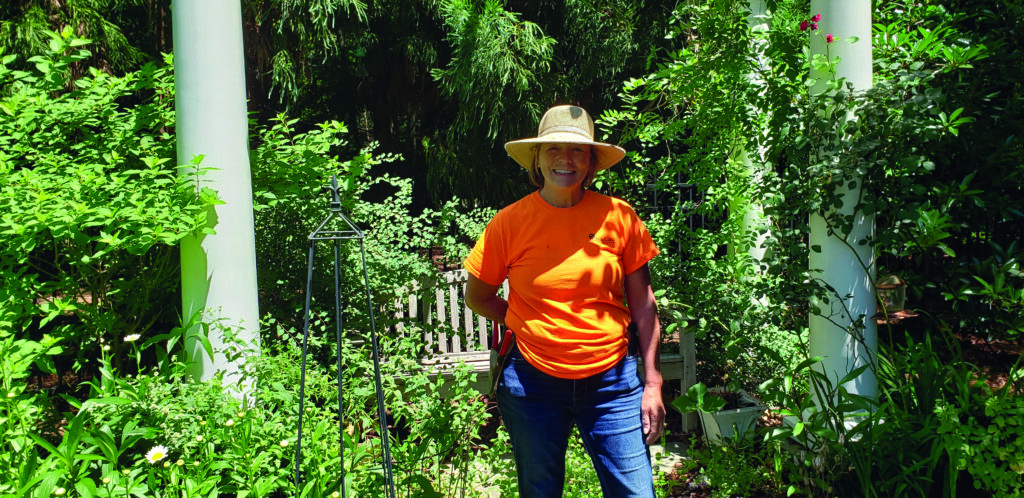
Americans are turning to apprenticeships to develop a much-needed workforce. An apprenticeship is a system of training a new generation of skilled crafts practitioners. According to the U.S. Department of Labor, more than 5 million people will be trained through apprenticeships in 1,000 industries over the next five years. And the landscape industry is part of that. Landscape business owners who are committing to NALP’s new Landscape Management Apprenticeship Program, registered by the Department of Labor, hope it will alleviate labor woes.
The Landscape Management Apprentice Program requires 2,000 hours of on-the-job training, as well as a minimum 144 hours in classroom learning—or an online equivalent.
Here, NALP talks to some landscape professionals who are using the program now.
Landscape Management Apprenticeship Program: Exciting Possibilities
Companies who have committed to the program are only a few months in, but they’re excited. Josh Denison, vice president of labor and human resources who oversees the inception of the apprenticeship program at Denison Landscaping in Fort Washington, Maryland, says he hopes apprenticeships will help the general public start to see landscaping as a skilled industry.
“We have always fought the stigma that we’re just those people who cut grass,” Denison says. “It’s hard to attract the right people with that stigma. So, I’m hopeful this program will start to change the perception and help people to see the industry for what it really is. It also gives younger generations a way to really look at this as a career—and see a clear pathway to success.”
In the D.C. Metro area, apprenticeships are becoming commonplace. Denison says he is seeing more requirements emerge about adding an apprentice after reaching a certain threshold of work. He took steps toward fulfilling this requirement when NALP announced its apprenticeship program officially during the Workforce Summit in February. Denison unenrolled with the D.C. apprenticeship program and started with NALP. Currently he has one individual already enrolled.
Landscape Management Apprenticeship Program: Retention Power
Chris Casselberry, apprentice program manager for Spring-Green Lawn Care Quality Turf Management LLC in Naperville, Illinois, says he’s also excited about the program, not only for its power to improve the perception of the industry but also for retention power. It’s always been an issue that “people come and go in this industry,” he says. But he’s hopeful the apprenticeship program means well-trained employees will want to stick around.

Dan Eichenlaub, president of Eichenlaub Inc., in Pittsburgh, Pennsylvania, agrees.
“A big part of retention is helping people feel like they’re growing within the company,” he says. “If they feel that way, they’ll stay. But if they feel like they’re not going anywhere, they’re going to move on. Teaching newcomers the skills they need to grow and have a successful career is a big part of that effort.”
Landscape Management Apprenticeship Program: Funding the Efforts
Many companies interested in the apprenticeship program still have concerns about funding. Casselberry says the cost of training has always been a barrier for increasing the company’s skilled workforce, and he is hopeful that some government subsidization will make this more doable.
There is certainly significant federal and state money available for apprenticeship programs, including funds to help companies pay for apprenticeship training and even new equipment for training. Additionally, many states offer tax credits to companies who are offering apprenticeships.

Barbara White, a manager with New Garden Landscaping and Nursery in Greensboro, North Carolina, has taken active steps to seek funding. She has gone through the process of accessing local grant funds to assist with the cost of the program. White says there are funds out there for programs like this and it just requires some digging. White applied for an incumbent worker training grant.
Of course, White admits, it’s a lot of paperwork. But in order to receive funding, she says it’s worth the work.
“It’s a lengthy application process. You must identify all of the dollars you plan to spend and how you plan to spend them,” White explains. “So, we had to talk about the cost of books and supplies. We’re also required to match 50 percent of their wages while they learn.”
Landscape Management Apprenticeship Program: Investing in Existing Employees
Even though White feels apprenticeship is focused on students out of high school, the company is using it to invest in existing employees. They presented the opportunity to employees who had been with the company for six months during a general meeting. Of those who were interested, they asked six open-ended questions, such as “Why do you think you should be chosen?” and, “Where do you see yourself in five years?”
Initially, 12 employees showed interest but only six submitted applications. White chose two to go through the program this year.
“We had some employees who were really pumped about it—just really into it—and that was exciting for us,” White says. “Of course, we had some who were fearful about the idea, too. The education piece of it can feel daunting. We’re hoping to learn a lot with these first two apprentices.”
White urges others to explore funding possibilities that are out there.
“With all the buzz surrounding apprenticeships, other companies should do some research to see available funding opportunities,” White says. “With the Department of Labor really pushing apprenticeships, there is funding out there.”
EDITOR’S NOTE: Learn more about NALP’s Landscape Management Apprenticeship Program here.

